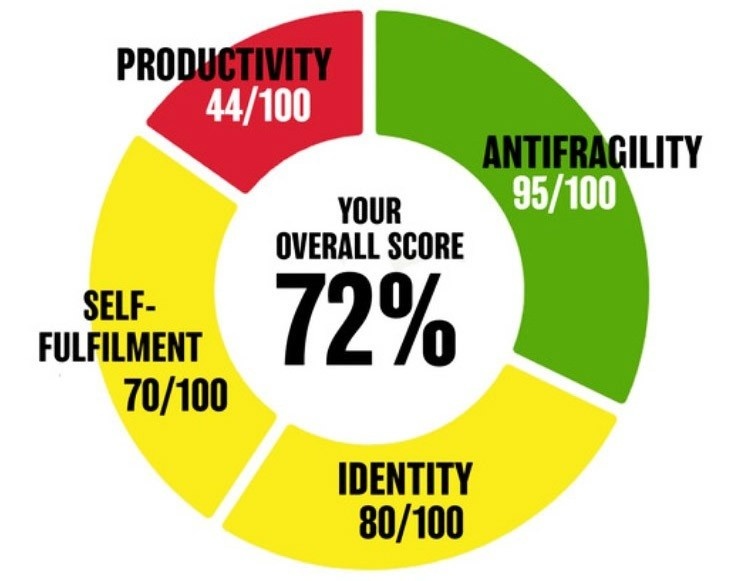This episode will teach you how not to set your goals, and will give you a much more powerful framework to use instead of the traditional smart goal setting framework.
KEY POINTS
F = Frequently Discussed – Goals should be discussed within teams, at the beginning of the month at the end of the month, discussed everywhere. Frequent discussion is correlated with the goal having a higher likelihood of achievement.
A = Ambitious – The goal should feel slightly out of reach, ambition inspires you to take action.
S = Specific – Be very clear about what the goal is and when you are looking to achieve it.
T = Transparent – The goal needs to be visible to all so that everyone can see the progress made. The more transparency around a goal, the more likely it will be achieved.
TRANSCRIPT
Would you like to know how not to set goals and why smart goals are lame? Well, by the end of this episode, you’ll not only know how not to set your goals, but also I’ll give you a much more powerful framework to use instead of the traditional smart goal setting framework. Hi, my name is Eric Partaker and I’ve been recognized as one of the top entrepreneurs in the country, as well as the CEO of the year. I’m also the author of two best selling books, including The Three Alarms.
So you may have heard of the traditional goal setting framework of setting smart goals, where the S stands for specific, then measurable, then attainable, then realistic, and then time bound. And that’s the traditional way that we’re encouraged to set goals, but that doesn’t really work for a variety of reasons and I definitely encourage you to not use this framework for your goal setting. The first reason it doesn’t work is because it doesn’t lead to very inspiring goals. It leads to goals, for example, that are attainable and realistic, but not goals that really push us out of our comfort zone. And if there’s one thing I’ve learned in my life and in the achievements I’ve experienced, is that we must set goals that lie outside of our comfort zone, that lie outside of ourselves, that perhaps don’t even seem attainable or that we will always be pursuing, perhaps never reach.
When I was helping build up Skype for example, before we sold it to eBay, our tagline was the whole world could talk for free and that was a goal that definitely wasn’t realistic. It definitely wasn’t attainable, but it inspired us to work towards it. Similarly with my work right now, my work is to get more of the world’s population to realize their full potential. And can I really transform the entire world’s population? Of course not. But having that big lofty goal is not attainable. It’s not realistic either, but it definitely inspires me. But within the smart goal setting framework, there’s no room for that because you’re limited to selecting goals which are attainable and realistic and that does not prompt bold, courageous, ambitious action.
The second reason is that smart goals don’t look too far ahead. They’re quite now and in the moment and that once again relates to their ambition level and we need to be looking at goals that are further out ahead that give us a sense of hope and like a North Star that we can be looking at. But smart goals are so in the moment that they keep us focused, almost like looking at our feet rather than looking at the horizon ahead. And I don’t know about you, but I want to be looking at goals that are off in the horizon and that really inspired me to action. Not to say that I don’t want to hit stepping stones that are a little bit nearer to that further off in the distance goal, but with the smart goal setting framework, I just find that I’m just too focused on the here and now.
And that leads me to the third reason why I don’t think this is a good goal setting framework, which is that because they don’t push us outside of our comfort zone, because they’re unemotive, because they’re not ambitious, because they’re too kind of here in the moment, I find them to be quite forgettable. And if nobody else can remember them and get inspired, then there’s no exciting force or momentum that’s happening within the team or within an organization or within our small group.
So my message is get rid of the smart goal setting framework. Now, so what do we use instead of the smart goal setting framework? Well, what I would encourage you to use is a framework which emerged out of the Massachusetts Institute of Technology, MIT and in their research, they found that fast goals work better than smart goals. So the F stands for frequently discussed, the A stands for ambitious, the S stands for specific, and the T for transparent. With frequently discussed, good goals are frequently discussed. They’re discussed within our teams, they’re discussed within the group. At the end of the month, at the beginning of the month, they’re talked about everywhere. And that frequent discussion is correlated with the goal having a higher likelihood of achievement. And by having a framework that actually encourages frequent discussion, you’re more likely then to positively impact the probability of achieving the goal.
The A stands for ambitious, as said, because we want goals that feel slightly out of reach. Ambitious goals. As I gave with the example with Skype, the whole world can talk for free. It inspired us to take action that we never would have taken otherwise. When I was questioning my own leadership ability as a founder, I set myself a goal of becoming the CEO of the year and that felt very ambitious to me at the time, but I created my own bootcamp that I followed over a two year period and it culminated in receiving that recognition as the CEO of the year. So that ambitious goal, again, inspired me to take action that I wouldn’t have taken otherwise.
The S stands for specific as mentioned. And yeah, we just need to be very clear about what is the goal, when are we looking to achieve it? Is there a metric associated with it?
And transparent. The goal needs to be visible to all so that everyone can see what’s going on with it, who’s working on it. How is it going? Is progress being made? Is progress not being made? And the more transparency we have around the goal, the more likely once again, the goal is to being achieved.
So, in summary, throw out the smart goal setting framework. Employ the fast goal setting framework instead. I’m sure you’ll see an increase in the likelihood of achieving your goals, which should lead to a more fulfilling work and life. And I’d love to hear from you so don’t forget to leave a comment and a rating as well. And if you’d like to get a copy of my new book, The Three Alarms, please head over to my website at ericpartaker.com. That’s ericpartaker.com, where you can pick up a free digital copy of my new best selling book, The 3 Alarms.




